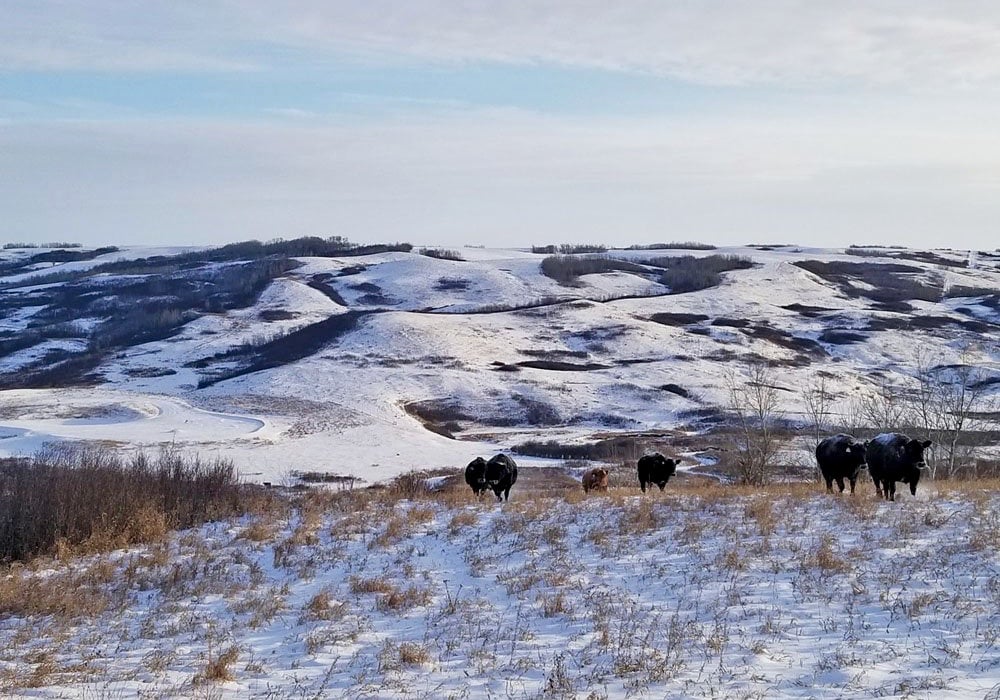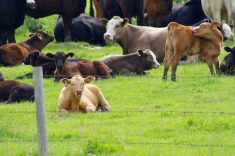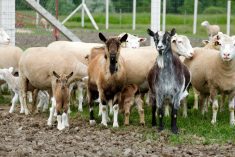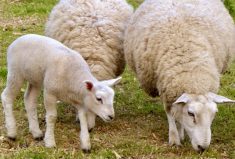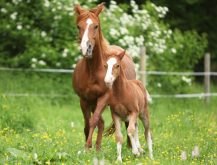If you want to move a sheep, the worst thing you can do is isolate it, yell at it, and then try to move it from behind.
“If you understand animal behaviour, that is 90 per cent of handling — the biggest knowledge gap that we have is true understanding of animal behaviour,” livestock-handling specialist Jennifer Woods said at Farmfair’s Small Ruminant day.
The right way is to stand by an animal’s side, stay calm, and work with the animal’s flight zone.
Unlike humans, animals are always in the moment — and for prey animals like sheep, even the slightest change in their environment can put them into flee-or-fight mode. When threatened, sheep will generally flee.
Read Also

Artificial intelligence powers sheep pregnancy and parasite detection tool
New sonic AI technology could give sheep farmers an alternative to ultrasound that they could use themselves to check ewes for pregnancy or detect dangerous parasites.
“Nothing has as strong a flocking instinct as a sheep does — they will flee as an entire flock,” said Woods, an animal welfare specialist and sheep producer from Blackie.
Understanding flight zones is a basic tool of handling, and by using their ‘fear meter,’ or flight response, a handler can get animals to move where she or he wants.
When a handler approaches sheep, they will usually keep on grazing. But when they feel threatened, their heads will pop up and they will start walking away. As soon as they start moving away calmly, the handler has found that particular flock’s flight zone.
“The reason they’re staying calm is because they are moving away from you as a cautionary reaction. They are not scared of you yet,” said Woods. “Move towards the animal, and they will turn and move away from you. That’s how you move livestock.”
If the handler gets too close, the fear meter will hit the red zone and the animals will begin running.
Sheep flight zones change depending on how flighty the animals are, how often they have been handled, and the manner in which they were handled. Animals will also have a larger flight zone if they are in an unfamiliar situation. The flightiest sheep in a flock is the animal whose head pops up first.
Sheep are also more reactive than some other livestock.
“Stay back away from them and you will keep them quieter,” said Woods. “The more predator traits you exhibit, the more high strung your animals will be, and the harder they are to handle.”
The point of balance on a sheep is their shoulder.
“If you are behind the shoulder, they go forward, and if you are in front of the shoulder, they go backward.”
The best way to move sheep is to focus the lead animal. Once that animal moves, the rest of the flock will follow. Don’t move animals from the back, because there are other animals in front of them, and they can’t move, just like a city driver caught in downtown traffic.
When moving sheep (or cattle), stay in their line of vision, off to the side. Sheep have a huge range of vision, and can see almost around them but their view is often compromised by the animal’s heavy fleece.
One of the strongest stressors on livestock, and sheep in particular, is isolation.
“I always tell people that if you need to sort one (animal) out, bring three,” said Woods. “They are going to come out a lot easier than trying to sort out one animal. Just bring them all in and treat the one in the group you need.”
Sheep will be upset by aggressive human behaviour, such as yelling, running, and waving arms. Prods can’t be used on sheep, because they can’t feel them through their fleece. And pulling on the fleece can hurt the animal — the leading cause of carcass damage in sheep is from wool pulling.
Sheep are not small cattle, said Woods, so they shouldn’t be handled the same way.
“One of the worst things you can have for sheep is a cattle guy. They think they (the sheep) are so physically small that they can be moved everywhere. And you shouldn’t do that. That’s a big problem that I see with people who come from the cattle side.”





